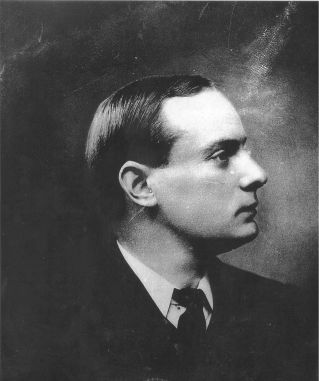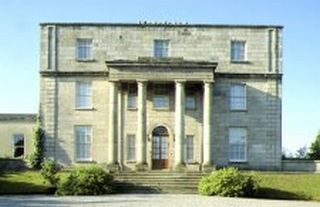Patrick Henry Pearse
1879-1916
Our National Hero - A True Braveheart

Barrister Patrick Pearse
Patrick Pearse (Pádriac MacPiarais) was born in Dublin, the son of a
self-educated, free-thinking sculptor from England
who specialised in ecclesiastical work. His mother, Margaret Brady Pearse, worked
tirelessly with him throughout his life. He became the President of the Provisional
Government of Ireland in 1916 briefly, before the British executed him on 3rd May 1916,
The fulfilment of his sacrifice was not obtained until the Irish Republic was declared
on 18 April 1949.
He joined the Gaelic League on leaving school and became single-mindedly committed to
the revival of the Irish Language and to educational reform in particular.
Intelligent and industrious, he won a scholarship
to the Royal University of Dublin where he studied law and was later called to the bar.
He practiced briefly as a barrister.

Commemorative stamp - Patrick Pearse
But his love was in education. So in 1908 he established an independent Irish-speaking
school for boys in Dublin, at Grange Road, Rathfarmham called St. Enda’s. Its pupils were to
"work hard … for their fatherland, and if it should
ever be necessary … die for it". Pádraig Pearse had established St.Enda's boys
school at Cullenswood House in Ranelagh in September 1908, but it was no sooner open
that it was decided that it was too small.

St Enda's- Patrick Pearse's School
Pearse decided to move the school to
The Hermitage, and he purchased it for the price of £6000 in 1910. It was established as
an experimental bi-lingual school in protest against the National School system, which
Pearse saw as an inadequate, English system. The school was a constant financial burden,
especially after the death of the Pearse brothers Willie and Pádraig in 1916. It finally
closed in 1935 and Pádraig and Willie's sister Margaret lived on in St.Enda's until her
death in 1969. The building was left to the state and extensive renovation was carried out
by the Office of Public Works. St.Enda's is now open to the public as the Pearse Museum.

Commemorative stamp - Irish Republic Declaration
Up to 1912, Patrick Pearse had appeared on Home Rule platforms but came increasingly to
support physical force Republicanism and the necessity for a ‘blood sacrifice’. He joined
the Irish Volunteer Force at its foundation in November 1913 and gained rapid promotion to
its headquarters staff. His speeches at the commemoration of Wolfe Tone’s death (1913) and
at the graveside of O’Donovan Rossa (1915) impressed those who were secretly organising the
Easter Rising. So in May 1915 he was made a member of the IRB Military Council which was
planning it.

Liberty Hall the Headquarters of the Rising
Patrick Pearse played an active role in the subsequent preparations: arranging for the
landing of German arms; negotiating with James Connolly; instructing and sending despatches
to the volunteers; lulling the British authorities and deceiving Eoin MacNeill.
He also wrote copiously to justify and explain the insurrection. On 23rd April, the Military
Council appointed him Commandant-General of the Army of the Irish Republic and President of
the Provisional Government to be proclaimed next day.
During Easter week Patrick Pearse served at the rebellion headquarters, the GPO, where he was
in titular command only. Since he was not a soldier of combat, it is unlikely that he fired
a single shot. However, he encouraged the other men greatly and throughout the ordeal,
he exuded a calm confidence. He interpreted his role as that of offering encouragement,
addressing the men to sustain morale and occasionally also the public, most famously by
reading the Proclamation on Easter Monday. Privately, he agonised over the moral rectitude
of what they had undertaken. He assumed defeat stating: "When we are all wiped out, people
will blame us. …In a few years they will see the meaning of what we tried to do."

British Troops around the GPO 1916
As fire swept through the Post Office on 28th April, 1916 he helped organise its evacuation
and was among the last to leave. At noon the next day, he accepted the majority view of
the leadership that they negotiate with British troops to prevent further slaughter of
civilians and save the lives of their followers.
At 2:30 pm he surrendered unconditionally on behalf of the Volunteers and later issued orders
to this effect.

The President of the Provisional Government, Patrick Pearse,
surrendering to General Lowe on Saturday afternoon, 29th April 1916.
Also in the photograph is General Lowe’s son John (in the white breeches)
who escorted Pearse to Kilmainham Gaol.
Patrick Pearse was court-martialled at Richmond Barracks on 2nd May, 1916. At his trial he,
if anything, exaggerated his role in the Rising, pleading that the lives of the men should
be spared and he himself executed. He was found guilty, sentenced to death and was
transferred to Kilmainham Gaol that evening. There he completed his correspondence,
further explaining and justifying the Rising. Though his role in planning the Rising had
been secondary, he became through his writings and the offices he held in Easter week,
its incarnation, icon and public image.
His executioners enabled him to fulfil his wish
for martyrdom. He wrote to his mother ‘This is the death I should have asked for if God had
given me the choice of all deaths’. Padriac Pearse faced the firing squad at between
3:30-4:00 am, 3 May, 1916 and was buried at Arbour Hill Barracks alongside Thomas Clarke
and Thomas MacDonagh who had also been executed that day.
|


